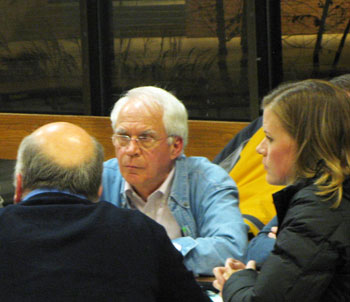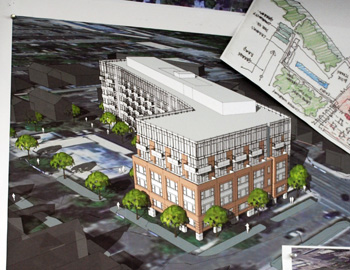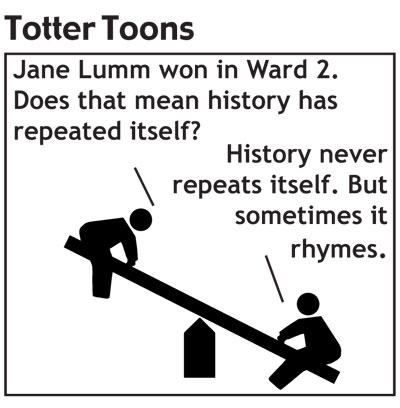Column: Ann Arbor’s Lumps of Art
Editor’s note: On Nov. 14, 2011, the Ann Arbor city council held a working session on the subject of its public art ordinance – the Percent for Art program. On Nov. 21, the council will take up the issue of a revision to the public art ordinance, which was postponed from its Sept. 19 meeting. The proposed revisions to the ordinance include prohibiting the use of the street repair millage for public art, and a requirement that public art funds be spent within a certain time period.
I am not a lunatic.
There.
Mostly, when you begin by asserting a lack of mental illness, you’ve already lost the argument. No matter what the argument is. Yet I remain steadfast.
I am not a lunatic.
It’s a testament, I think, to the political skill of Ann Arbor’s elected officials and supporters of public art that I have to begin that way. The majority of these officials and members of the arts community have so far been resistant to calls for revision to the city’s public art ordinance. That ordinance allocates 1% of all city capital improvement projects to fund public works of art.
The current conversation about the city’s public art ordinance is one that makes critics of the ordinance into lunatics.
We are lunatics, because we just don’t understand the value of art to society in general. We are lunatics, because we just don’t understand the importance of art to Ann Arbor’s heart and soul in particular. We are lunatics, because we don’t understand how little money the ordinance generates for art. We are lunatics, because we don’t understand how long it takes to bring a large work of art to fruition. And so on.
Actually, I do understand all of that. And more.
But to convince you I’m not a lunatic, I’d like to begin by sharing a vignette from a significant academic paper on semantics, written by Angelika Kratzer back in 1989. (No, seriously, I’m not a lunatic.) I’m picking Kratzer’s “Investigation into the Lumps of Thought” because it features a dialogue with a genuine, bona fide, authentic lunatic.
That guy, now he’s a lunatic.
By the end of this column, I hope to have convinced you that I’m nothing like that guy. [Full Story]









